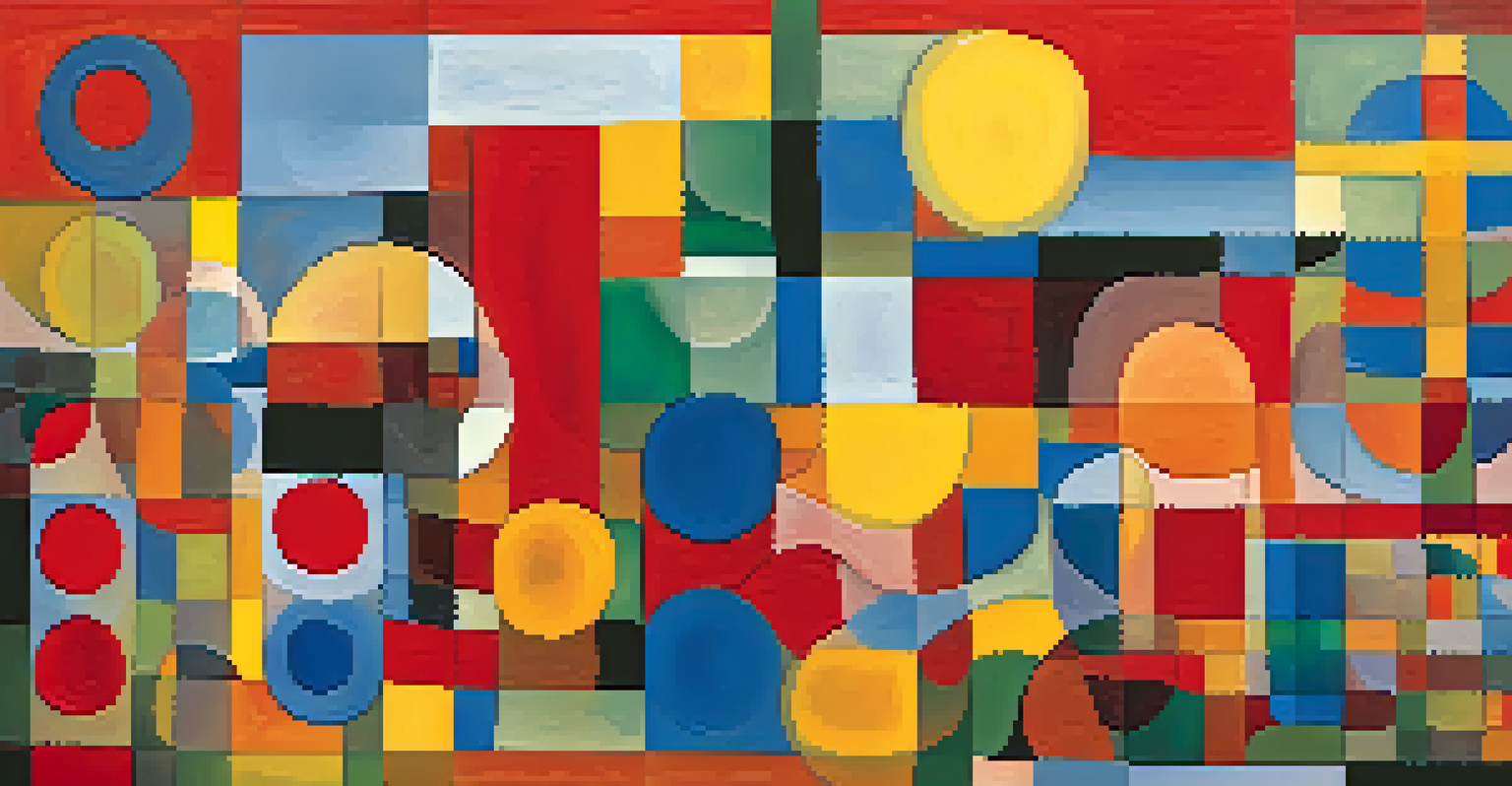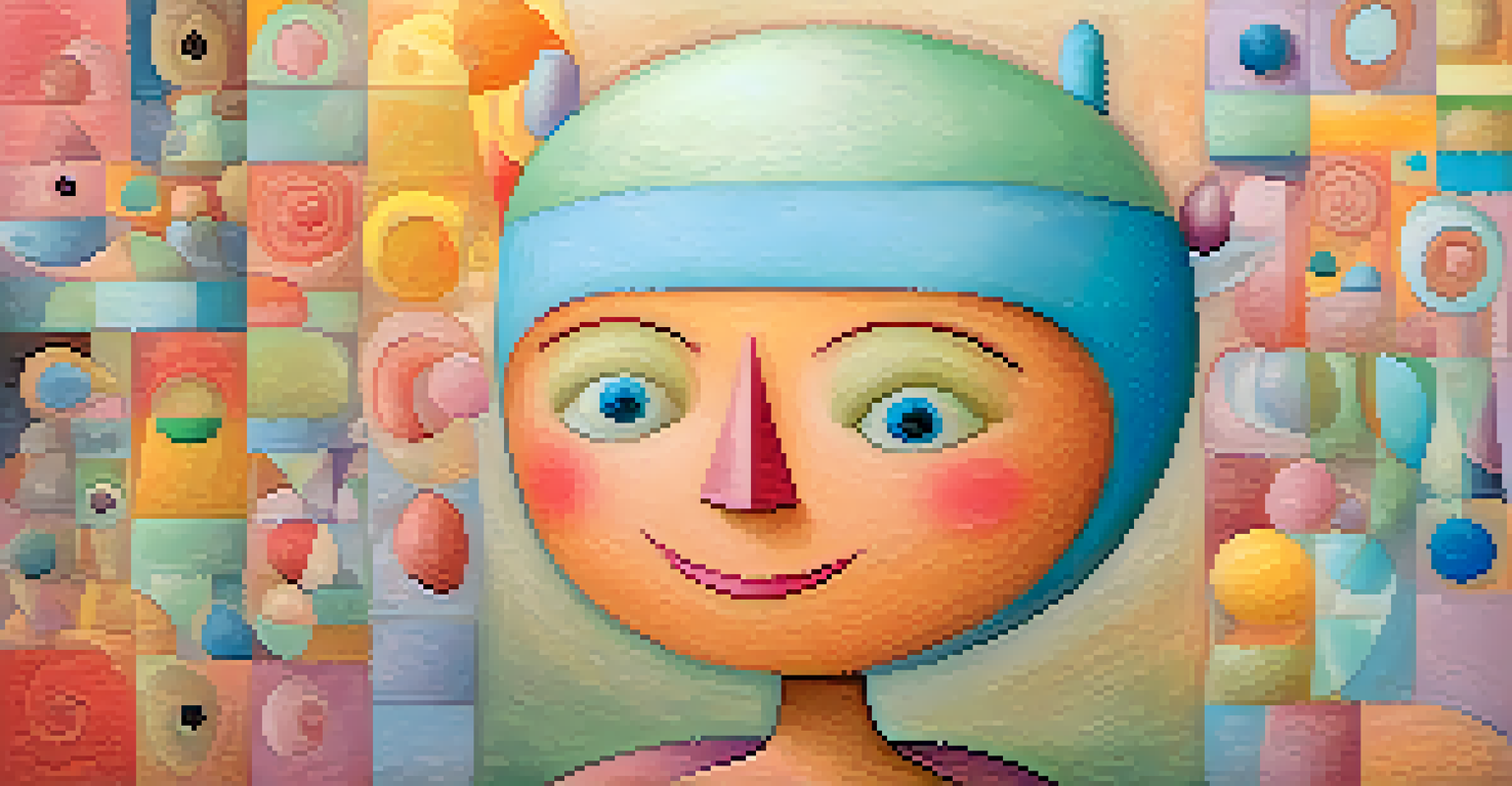The Influential Vision of Paul Klee: Art and Expression Combined

Understanding Paul Klee's Artistic Philosophy
Paul Klee was not just an artist; he was a visionary who believed in the power of expression through art. His philosophy centered around the idea that art should reflect the inner feelings and thoughts of the artist. This belief transformed how he approached his work, making it a deeply personal experience that resonated with viewers.
A line is a dot that went for a walk.
Klee often said, 'A line is a dot that went for a walk,' which encapsulates his playful yet profound approach to drawing and painting. He saw lines as living entities, capable of expressing emotions and ideas in a dynamic way. This perspective encouraged him to experiment with forms and colors, resulting in a style that was uniquely his own.
His commitment to expressing the emotional depth of his subjects often led him to blend abstraction with figuration. This fusion created a visual language that invited viewers to engage with the artwork on a personal level, making his pieces both accessible and thought-provoking.
The Influence of Expressionism on Klee's Work
Klee's work was heavily influenced by the Expressionist movement, which sought to convey emotional experiences rather than physical reality. This influence can be seen in his vibrant use of color and imaginative forms that evoke feelings and thoughts. For Klee, colors were not just visual elements; they were carriers of emotion and messages.

In many of his pieces, Klee used color theory to evoke specific moods. For instance, warm colors like reds and yellows often convey energy and warmth, while cooler colors like blues can suggest calm and introspection. This intentional use of color helps viewers connect with the artwork on an emotional level, further enhancing its impact.
Klee's Art Reflects Inner Emotions
Paul Klee believed that art should convey the inner feelings and thoughts of the artist, creating a personal connection with viewers.
Moreover, Klee’s background in music also played a crucial role in shaping his artistic expression. He believed that visual art could parallel musical composition, where rhythm and harmony could be conveyed through brush strokes and color arrangements. This integration of musicality into his art added another layer of depth to his work.
The Role of Childhood and Imagination in Klee's Art
Klee's work often reflects a childlike sense of wonder and imagination, which he believed was essential for creativity. He once remarked that the best artists are those who can tap into their inner child, allowing them to see the world with fresh eyes. This perspective is evident in his whimsical characters and fantastical landscapes.
Color is the keyboard, the eyes are the harmonies, the soul is the piano with many strings.
By embracing the simplicity and spontaneity of childhood, Klee was able to create artwork that resonates with both adults and children alike. His playful depictions invite viewers to reconnect with their own sense of wonder, making his art timeless and universally appealing. This connection to imagination is a key aspect of his legacy.
Additionally, Klee often incorporated elements of storytelling into his work, using symbols and shapes to narrate tales or convey complex emotions. This narrative quality adds another layer of engagement, allowing viewers to interpret and connect with his art in personal ways.
Klee's Use of Symbolism and Abstraction
Symbolism played a significant role in Klee's artistic practice, as he often used shapes and forms to represent deeper meanings. His abstract symbols can be seen as a visual language, where each element carries a specific significance or emotion. This approach encourages viewers to explore the layers of meaning behind each piece.
For instance, Klee frequently employed geometric shapes, which could symbolize stability or tension depending on their arrangement. This use of abstraction allows him to convey complex ideas without the constraints of realistic representation. It fosters a space for interpretation and encourages personal connections to the artwork.
Color as Emotional Language
Klee used color theory to evoke specific moods, making colors integral to the emotional depth and meaning of his artwork.
Klee's ability to blend symbolism with abstraction has inspired countless artists and movements. His unique approach invites viewers to engage with art on multiple levels, making the experience of viewing his work both intellectually stimulating and emotionally resonant.
The Importance of Color in Klee's Artistic Language
Color was one of the most essential tools in Klee's artistic arsenal, used to evoke emotions and convey meaning. His innovative use of color theory allowed him to create harmonious compositions that draw viewers in. Klee believed that color could communicate feelings more effectively than words, which is evident in the vibrant palettes of his paintings.
For example, in works like 'Twittering Machine,' Klee employed a combination of bright yellows and deep blues to create a sense of movement and energy. These colors not only capture attention but also evoke a sense of playfulness, mirroring the subject matter. This intentional choice of color enhances the overall impact of the artwork.
Klee's pioneering color techniques have influenced generations of artists, highlighting the emotional power of color in visual art. His legacy continues to inspire those who seek to explore the boundaries of color in their own creative pursuits.
Klee's Legacy and Influence on Modern Art
Paul Klee's impact on modern art cannot be overstated, as his innovative techniques and emotional depth paved the way for future artists. His ability to blend various styles, such as Expressionism, Cubism, and Surrealism, created a rich tapestry of influence that resonates in contemporary art today. Many modern artists draw inspiration from Klee's playful use of color and abstraction.
Moreover, Klee's emphasis on the emotional aspects of art continues to inspire artists to explore their own feelings and experiences. His work encourages a deeper connection between the artist and the audience, fostering a sense of shared humanity. This focus on emotional expression remains relevant in today's art world.
Childlike Imagination in Art
Klee emphasized the importance of childhood wonder and imagination, allowing his art to resonate with both adults and children alike.
In art education, Klee's techniques and philosophies are often taught to inspire budding artists. His inventive approach to creativity encourages experimentation and exploration, reminding artists that there are no boundaries when it comes to self-expression.
Conclusion: Klee's Enduring Impact on Art and Expression
In conclusion, Paul Klee's artistic vision transcends time, emphasizing the importance of expression, imagination, and emotional depth. His unique blend of abstraction and symbolism has left an indelible mark on the world of art, inspiring countless artists and art enthusiasts alike. Klee's work invites us to view the world through a different lens, encouraging a deeper understanding of our own emotions.
As we reflect on Klee's contributions, it's clear that his legacy is not just about the art he created, but also about the conversations he sparked around creativity and expression. His belief that art should reflect the inner workings of the human experience continues to resonate today, making his work as relevant now as it was during his lifetime.

Ultimately, Klee's vision reminds us of the power of art to connect, heal, and inspire. His ability to convey complex emotions through simple forms and colors serves as a testament to the transformative nature of artistic expression.